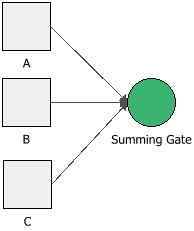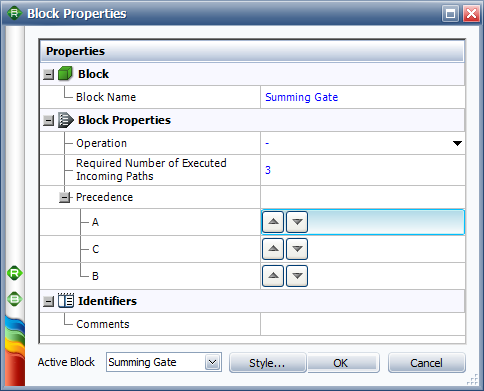

| Related Topics: | ||

A summing gate is a block that performs a simple mathematical operation on the incoming values and returns a single value to all outgoing paths. These operations include addition, subtraction, multiplication or division. Starting in version 9.0.11, they also include averaging incoming values and finding the maximum or minimum of the incoming values. For example, the following configuration shows three blocks that pass their output values to a summing gate.

If you select to perform addition or multiplication, the values can be passed to the summing gate in any order without affecting the result (i.e., the gate follows the associative and commutative properties of addition and multiplication). The order of incoming values is also not relevant when averaging the values or finding the maximum or minimum value.
If you select to perform subtraction or division, you can define the appropriate order of operation by using the Precedence area of the gate's Block Properties window. For example, the following picture shows that the order of subtraction will be: (A - C) - B. To move a block up or down in priority, click the arrows that appear next to the block's name.
The Required Number of Executed Incoming Paths field allows you to control the number of inputs that the summing gate processes at any given time. Starting in version 9.0.10, an asterisk (*) in this field means that all incoming paths are required. See Flowchart Configurations and Execution for an example on how this block setting affects the results of a flowchart.

© 1992-2015. ReliaSoft Corporation. ALL RIGHTS RESERVED.